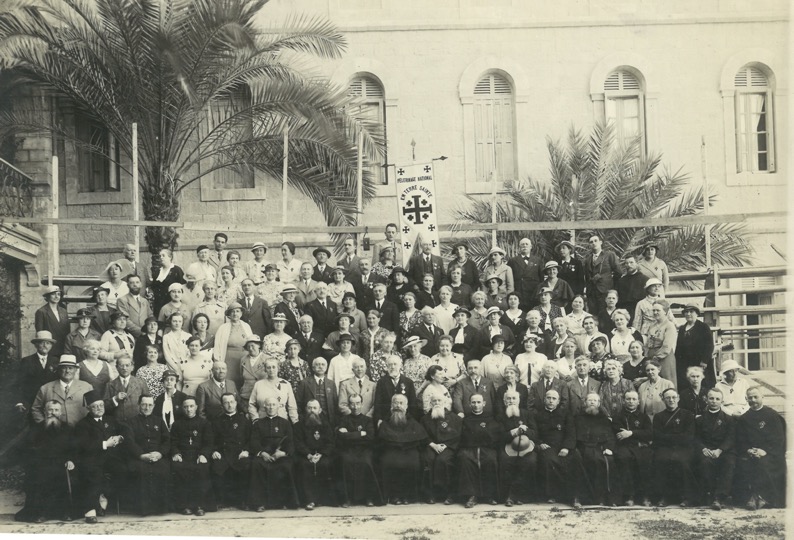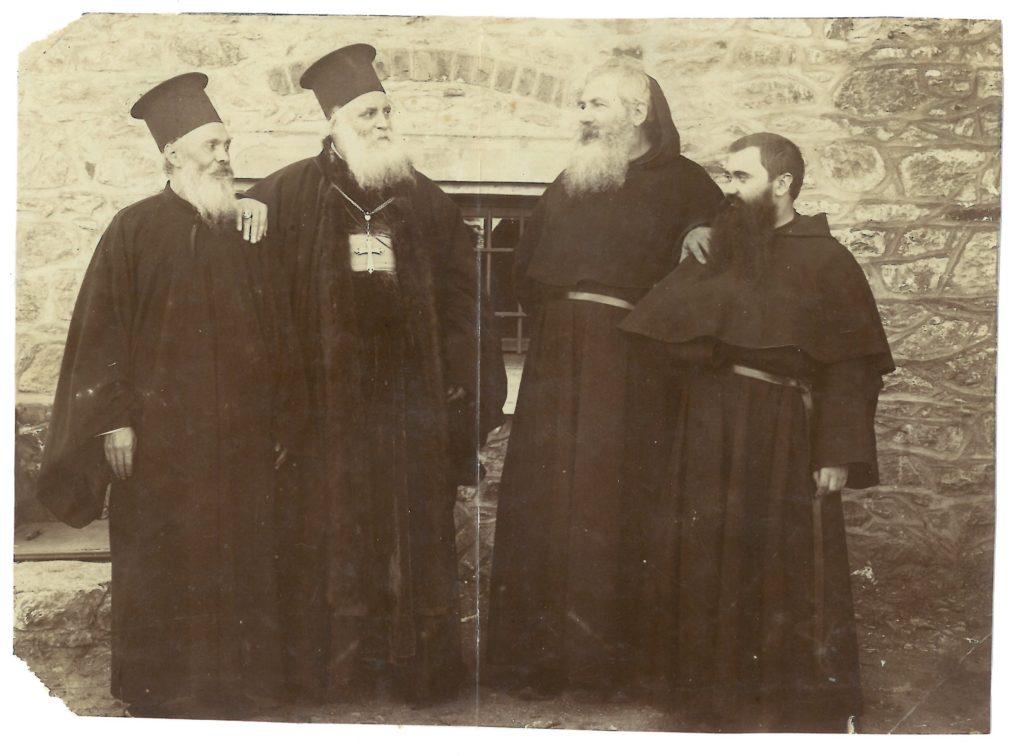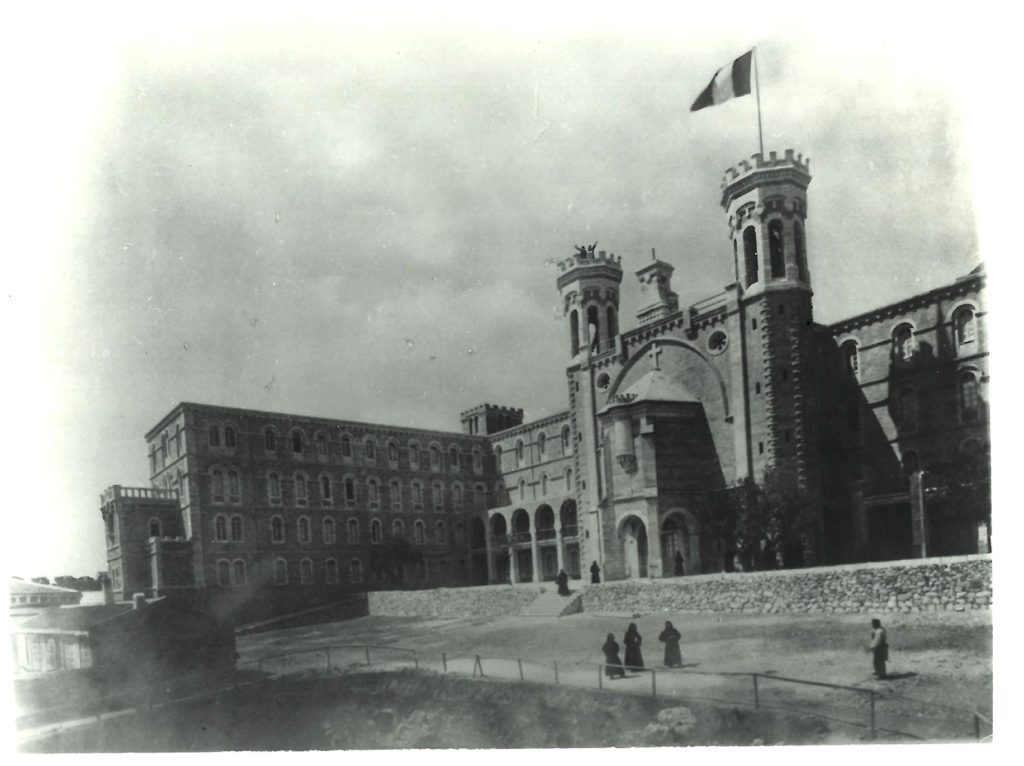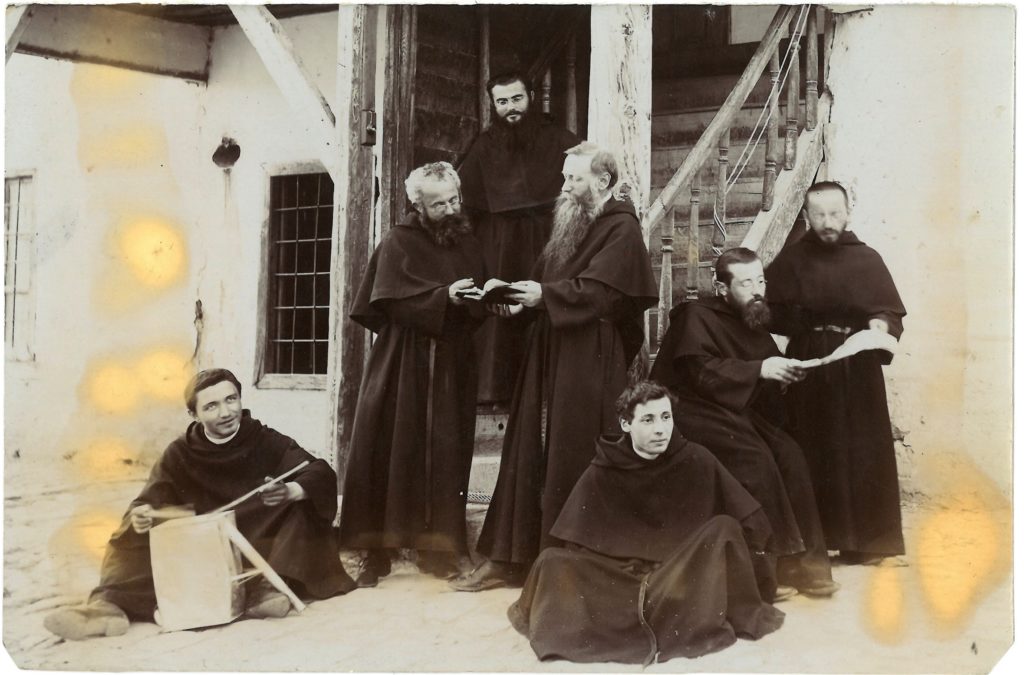The congregation expanded especially after the death of Fr. d’Alzon. At his death, there were only 68 religious and 11 novices. It was the “alumnats”, small seminaries for young people coming from modest or poor families, that would bring in the bulk of the troops until the congregation reached a peak of almost 2000 religious in the middle of the 20th century.
Development of numerous works in the 19th century
Under Father François Picard, the successor of Father d’Alzon, several of the great works of the Augustinians of the Assumption took root and took flight: La Bonne Presse (which became Bayard Presse) with Le Pèlerin (1873) and La Croix, launched as a daily newspaper in 1883 as well as the creation in 25 years of more than 30 titles.
Pilgrimages to Lourdes, Rome, Jerusalem where Assumptionists accompany crowds of pilgrims.
The Oriental Mission (first in Turkey and Bulgaria…).
And the world of teaching with a first development on the side of Bulgaria (College of Saint Augustine) starting from the College of the birth of the Assumption: the College of Nîmes.
First issues of Le Pèlerin (1873) and La Croix (1883) Pilgrimage to the Holy Land
The Exile and international development
The Third Republic in France was particularly anticlerical, with the first expulsion of religious from their communities in 1880 and especially the dissolution of the Congregation in France in 1900 followed by the systematic expulsion of Assumptionists from France. The Congregation was particularly targeted because of its press which had a significant impact on French Catholic opinion.
On the other hand, this persecution contributed to the spread of the Assumptionists, as it did for other French congregations, by pushing them to expand internationally as early as the 19th century. Whether in Europe, South America, or North America…
Return to France and recognition of the Congregation
Emmanuel Bailly (from the beginning of the 20th century to the end of the First World War) it was the double ordeal of dispersion and war with, in particular, the dismantling of the presence in Turkey and Bulgaria (where, before the war, up to 150 religious and 200 Oblate Sisters of the Assumption were working) and then, of course, the lot of young religious who died on the battlefields and a real estate patrimony that had been ransacked or plundered in several countries.
One of the positive aspects of the Assumption were the return of the Congregation to France. In fact, the religious who had fulfilled their military duty was allowed – despite real controversy – to remain in France all the same. They will, in fact, simply be tolerated there. For various reasons, the Congregation did not obtain official recognition by the French State until 2013, 168 years after its foundation!
Years of expansion and missionary adventure
The years between the end of the First World War and the Second Vatican Council were years of expansion and missionary adventure (with, of course, the parenthesis of the Second World War): partial revival of the presence in the Mission d’Orient; foundation in the 1930s to 1950s in Congo-Belgium, North Africa, China and Madagascar, West Africa….
But it was also a time of persecution in the countries of the Soviet bloc… Several of them were deported to forced labor camps and 3 of them, recognized as martyrs of the faith, was being condemned to death in 1952 in Bulgaria.
It was also the time of the deployment of Augustinian and Byzantine Studies, with specialized libraries, scientific journals, and Assumptionist researchers who became great figures, specialists in Augustine and the Byzantine world.
Renewal
The post-conciliar period was a time of trial with many departures but also a time of renewal that led in the 1980s to a return of the Augustinian and Alzonian fundamentals and to a renewed youth and vocation ministry. Finally, the 2000s marked by development in Asia, the return to West Africa, and a much more international animation of the Congregation.








